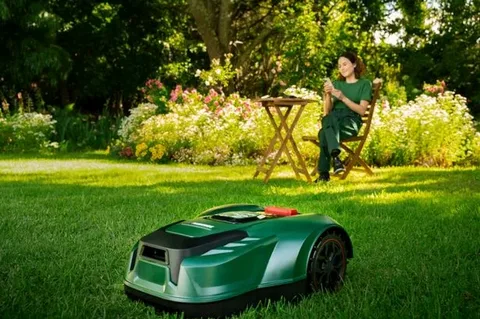The Evolution of Lawn Mower Robots: Past, Present, and Future
In recent years, lawn mower robots have revolutionized the way homeowners maintain their lawns. From simple, manual tools to fully automated machines, the journey of robotic lawn mowers reflects the rapid advancement in technology and convenience. This article explores The Evolution of lawn mower robot: Past, Present, and Future, highlighting key developments and what lies ahead for these innovative gardening helpers.
The Past: Origins and Early Development
The concept of robotic lawn mowers dates back several decades, but early models were far from the sophisticated devices we see today. Initially, lawn care was purely manual, requiring hours of labor with push mowers or gas-powered machines. The first attempts at automation appeared in the late 20th century when inventors began experimenting with battery-powered, self-propelled mowers.
Early robotic lawn mowers were bulky, had limited navigation capabilities, and required complex boundary wires to keep them on track. Despite their limitations, these pioneering models laid the groundwork for the advancements that would follow, making the dream of hands-free lawn care a reality.
The Present: Modern Technology and Widespread Adoption
Today, the evolution of lawn mower robots has brought us intelligent machines equipped with advanced sensors, GPS technology, and smart programming. Modern robotic mowers can navigate complex landscapes, avoid obstacles, and operate quietly with minimal supervision. Many models now offer app control, allowing users to schedule mowing sessions and monitor performance from their smartphones.
Furthermore, these machines are environmentally friendly, using electric power instead of gas, reducing emissions, and lowering noise pollution. The rise in demand for smart home devices has accelerated the adoption of robotic lawn mowers, transforming lawn care into a seamless, automated experience for homeowners worldwide.
The Future: Innovations and Emerging Trends
Looking ahead, The Evolution of Lawn Mower Robots: Past, Present, and Future shows promising potential for even more advanced features. Future robotic mowers are expected to incorporate AI-driven decision-making, better obstacle recognition, and integration with other smart garden tools. Solar-powered models are also on the horizon, aiming to increase efficiency and sustainability.
Additionally, improvements in battery technology will extend runtime, allowing robots to cover larger areas without recharging. The future may also see collaborative mowing robots working together to maintain vast properties, making lawn care more efficient than ever before.
Conclusion
The journey through The Evolution of Lawn Mower Robots: Past, Present, and Future highlights how far technology has come in automating a task once considered labor-intensive. From rudimentary early models to intelligent machines designed for modern lifestyles, lawn mower robots continue to evolve, promising a future where maintaining a beautiful lawn requires minimal effort.
As innovation accelerates, homeowners can look forward to robotic lawn mowers that are smarter, greener, and more adaptable, marking an exciting new chapter in the world of automated gardening.

